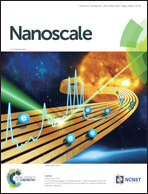Comment on “Glycine-functionalized copper(ii) hydroxide nanoparticles with high intrinsic superoxide dismutase activity” by K. Korschelt, R. Ragg, C. S. Metzger, M. Kluenker, M. Oster, B. Barton, M. Panthöfer, D. Strand, U. Kolb, M. Mondeshki, S. Strand, J. Brieger, M. N. Tahir and W. Tremel, Nanoscale, 2017, 9, 3952
Abstract
Detoxification of cigarette smoke employing copper compounds has a potential for the formation of polychlorinated dibenzo-p-dioxins and dibenzofurans and should not be practiced before the degree of formation has been shown to be harmless.


 Please wait while we load your content...
Please wait while we load your content...